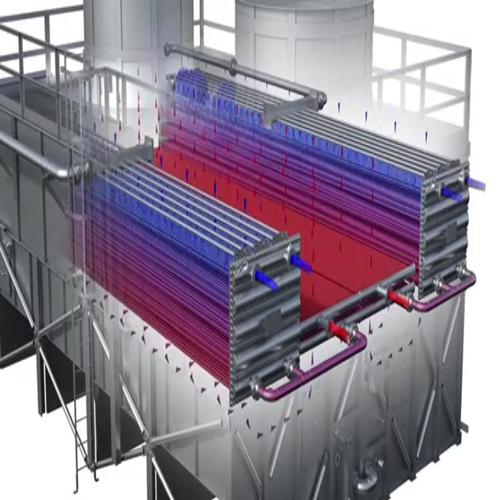


Hybrid Cooling Tower Design (Combination of Air Cooler and Wet Cooling Tower)
Overview: A hybrid cooling tower integrates the benefits of both air-cooled heat exchangers and wet cooling towers into a single system. This design is ideal for environments with water scarcity, high ambient temperatures, or strict plume control requirements—common challenges in petrochemical plants and power generation facilities.
description
Design Methodology:
-
Thermal Load Distribution:
- Split the cooling duty between the dry section (air cooler) and the wet section (cooling tower).
- The dry cooler handles sensible heat removal using ambient air, reducing water usage.
- The wet section polishes the final temperature drop, leveraging evaporative cooling.
-
Configuration Options:
- Series Configuration: Air cooler first, followed by a cooling tower.
- Parallel Configuration: Both units operate simultaneously on separate loops or stages.
- Choose configuration based on climate, cooling range, and process requirements.
-
Materials & Components:
- Use galvanized steel or stainless steel for dry cooler coils.
- Select corrosion-resistant fill and efficient drift eliminators in the wet section.
- Fan systems must be optimized for both air velocity and energy consumption.
-
Control System Integration:
- Implement smart controls to adjust fan speeds and bypass valves based on ambient temperature and cooling demand.
- Automated switching between dry and wet modes can drastically reduce water and power consumption.
-
Water Management:
- Design water circuit with minimal blowdown and make-up needs.
- In some designs, adiabatic cooling (mist pre-cooling for air) is added to further reduce tower water use.
Retrofit & Optimization:
-
Dry Add-on to Existing Tower:
Retrofit an air-cooled coil bank upstream of an existing wet cooling tower to reduce plume and water load. -
Energy Efficiency Improvements:
Add VFDs to fan motors and install real-time control systems for dynamic operation based on process load and climate. -
Plume Abatement:
In cold climates or urban zones, hybrid towers help eliminate visible plume without sacrificing thermal performance. -
Water Savings:
Operate in dry mode during winter or low load periods to significantly cut water consumption. -
Performance Monitoring:
Use IoT sensors for predictive maintenance, water chemistry tracking, and optimization of hybrid mode switching.